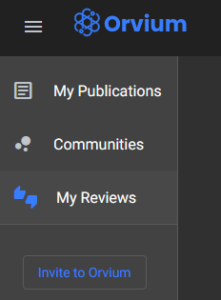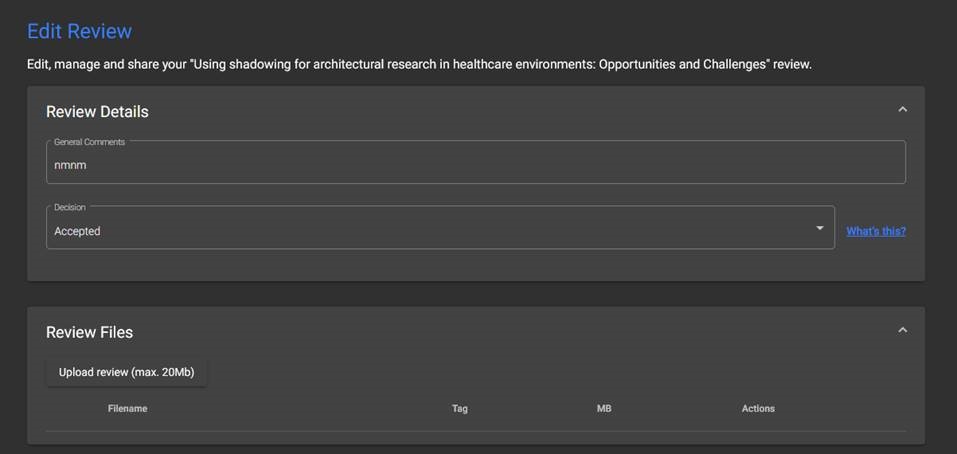Important Dates (Updated!)
Deadlines ARCH22 Conference
March 15st 2022 Submission short and full conference paper (own choice)
April 1st – 25th 2022 Assistance in peer reviewing (full/short) paper
May 9 – 15, 2022 Feedback on review (will be reviewed by a Scientific Committee member and at least one presenter from the same session. Deadline submission of peer review extended from 1st May to 8th of May 2022)
June 1st 2022 Submission final abstract for ‘book of abstracts’ (for authors of papers and posters)
June 15th 2022 Submission final full and short paper, and poster for publication on website and for conference proceedings
August 22-24th 2022 ARCH22 Conference Building for better health
The Evolving Scholar Publishing process
The Evolving Scholar (ThES) is a community-driven open-access journal published by TU Delft OPEN.
Authors have received an invitation to submit a poster or a paper. Posters will be made available from the ARCH22 website. Authors can choose to submit to The Evolving Scholar, a full conference paper or a short conference paper, such according to their own preferences.
Please download the document “Instructions for authors“, and the correlated template for the writing of your full paper or short paper. Please be aware that the document “Instructions for authors” might be updated. Check the latest version on this webpage before submitting your paper.
Go to the ARCH22 community page and submit your short or full conference paper!
All submitted papers are in the review process, but the draft version (pre-print) is open access on the Orvium platform as soon as the final version is submitted. The final paper we refer to as the pre-print version.
These papers can be sorted by tracks, title of the paper, or names of the authors, etc.
- You can decide yourself whether you submit a short or full conference paper
- You can also decide to submit a poster instead. A poster will not be peer reviewed. You can upload your poster at a later time.
- Posters and abstracts will be made available from the conference website.
Poster outline
There is no formal template but you can use on of the following templates. Although posters are free format, we recommend A0 or A1. We will make an entry for submission of the poster available in early May 2022 from the ARCH22 website.
The following headings are recommended:
-
- Introduction explaining the problem and/or the relevance and have some background mentioning at least the main concepts that are central to your research. Mention the aim of the study at the end of the introduction.
- Methods (philosophical underpinning, case selection, data collection methods, data analysis methods
- Findings
- Conclusion (Give a comprehensive answer to the research question)
- Practical implications (what do you advice practitioners based on your findings)
If you are using published images, text or other materials, please be aware of copyright regulations. The TU Delft Copyright helpdesk can provide further information and answer your copyright questions.
Review guidelines
We will send you an invitation from the Orvium platform to act as a reviewer for one of the papers in the session. The session chair is invited to review multiple papers.
If you accept the invitation , then you can access the selected paper from the Orvium platform.

At [my reviews] you can then create a review.
We have asked all reviewers to upload a word document as we prefer to use the review option in word to suggest any changes.

So there is both the possibility to summarize and have general remarks as well as specific remarks per section.
Here, you can also upload the review as a word document and clarify in the Word document itself by using the comments function in the tab Review in Word.
How to do a review
We slightly adapted the Wiley guidelines https://authorservices.wiley.com/Reviewers/journal-reviewers/how-to-perform-a-peer-review/step-by-step-guide-to-reviewing-a-manuscript.html that one can use to make a review report that can be inserted at General comments.
In the Word version it would be helpful to make comments whenever things are really nice or if things are unclear.
How to Structure Your Report
You can follow an informal report format and you could structure your report in three sections: summary, major issues, minor issues. Make specific comments in the word document using Review.
Summary
- Give positive feedback first. Authors are more likely to read your review if you do so. But don’t overdo it if you will be recommending rejection
- Briefly summarize what the paper is about and what the findings are
- Try to put the findings of the paper into the context of the existing literature and current knowledge
- Indicate the significance of the work and if it is novel or mainly confirmatory
- Indicate the work’s strengths, its quality and completeness
- State any major flaws or weaknesses and note any special considerations. For example, if previously held theories are being overlooked
Major Issues
- Are there any major flaws? State what they are and what the severity of their impact is on the paper
- Has similar work already been published without the authors acknowledging this?
- Are the authors presenting findings that challenge current thinking? Is the evidence they present strong enough to prove their case? Have they cited all the relevant work that would contradict their thinking and addressed it appropriately?
- If major revisions are required, try to indicate clearly what they are
- Are there any major presentational problems? Are figures & tables, language and manuscript structure all clear enough for you to accurately assess the work?
- Are there any ethical issues? If you are unsure it may be better to disclose these in the confidential comments section
Minor Issues
- Are there places where meaning is ambiguous? How can this be corrected?
- Are the correct references cited? If not, which should be cited instead/also? Are citations excessive, limited, or biased?
- Are there any factual, numerical or unit errors? If so, what are they?
- Are all tables and figures appropriate, sufficient, and correctly labelled? If not, say which are not
On Presentation and Style
Your review should ultimately help the author improve their article. So be polite, honest and clear. You should also try to be objective and constructive, not subjective and destructive.
You should also:
- Write clearly and so you can be understood by people whose first language is not English
- Avoid complex or unusual words, especially ones that would even confuse native speakers
- Treat the author’s work the way you would like your own to be treated
